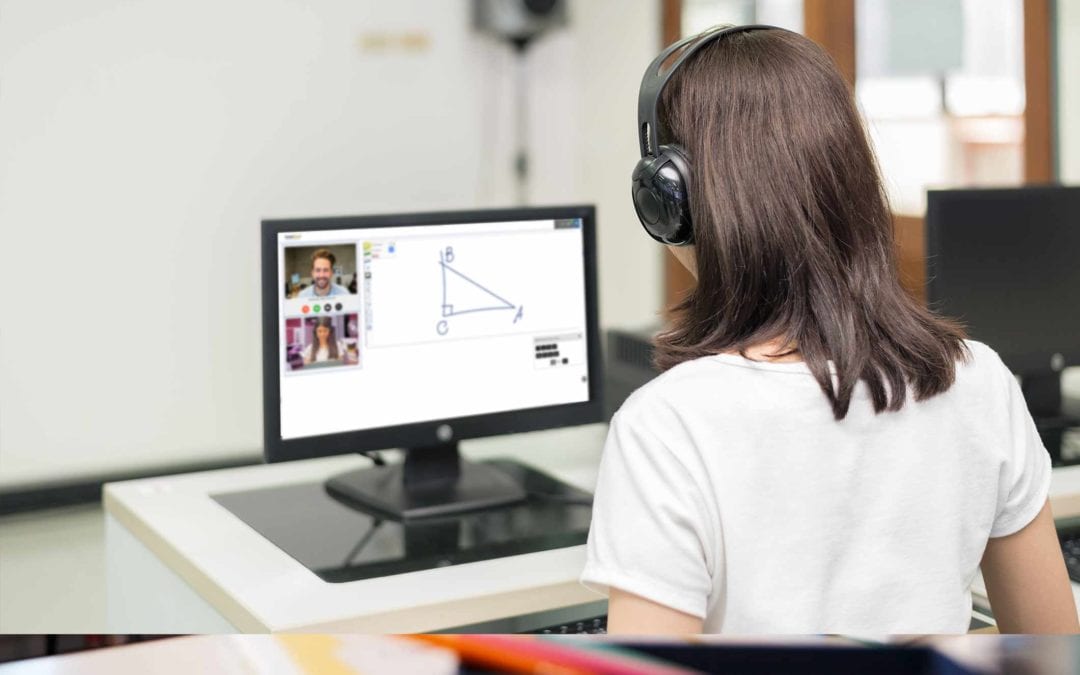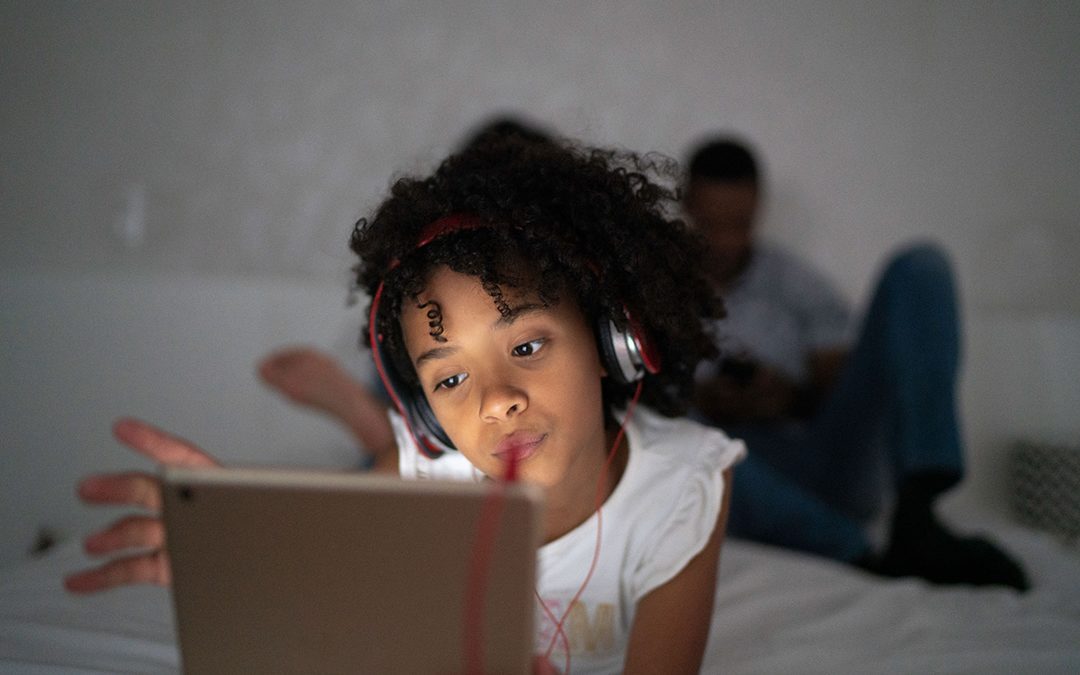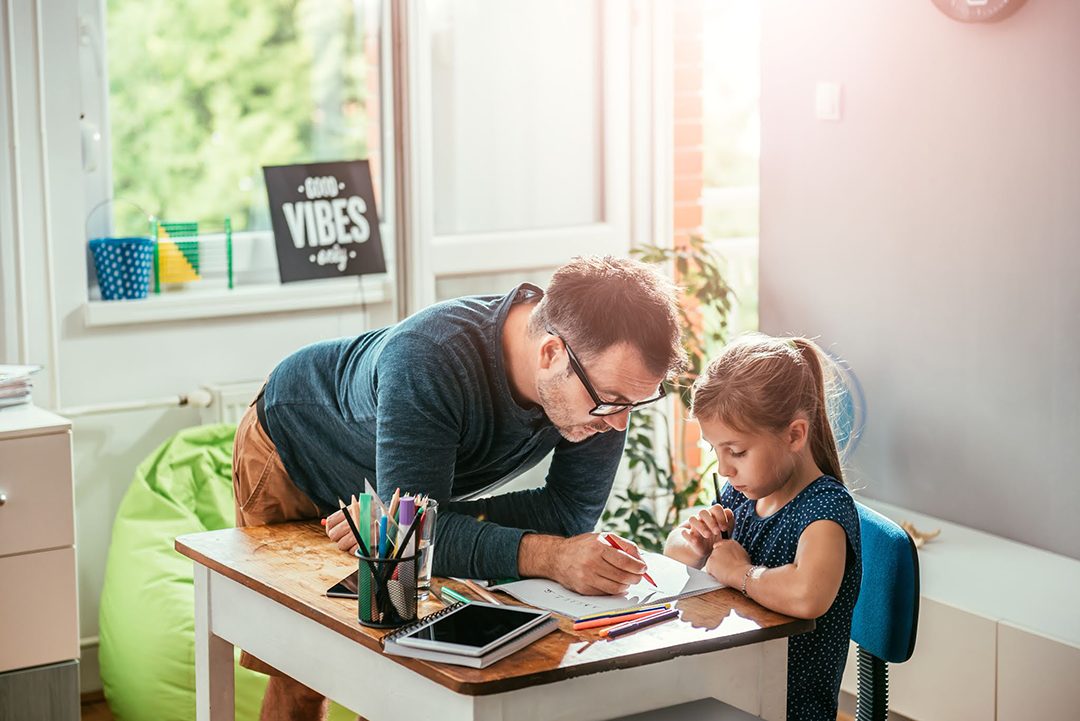
by TutorUp | Jul 24, 2020 | Online Tutoring
Many school districts are planning to open in the next month or two with totally online learning or a combination of some in-person school sessions plus online classes. The terminology for this is kind of all over the place, and it’s confusing.
School districts across the United States are posting their reopening plans and they include:
- Remote learning only
- Full in-person reopening for all students
- Hybrid/Partial
Some school districts will begin with remote learning, but plan to move to in-person school sometime after the beginning of the new school year.
Online classes – or “remote learning” – can mean that the teacher conducts a Zoom-type meeting with some or all of her students meeting together at the same time. Some schools are making videoed lessons available for students to watch whenever they can. Or it could mean that the school has an online platform where teachers post assignments and students post their work, along with live chat or a bulletin board where messages can be posted. There may be live video, and in some cases, teachers will spend a few minutes each week in a one-on-one conversation with each student. Or it could be any combination of the above.
One teacher in New York described the experience like this, “Here I am, at 66, within a year of full retirement, having to learn how to use Google Classroom with 35 first graders at various places in their learning. I feel as though I am attempting to drive on a road that I am simultaneously paving while also following a paper map.” –Janet Kass, teaches first grade, Bloomingburg, N.Y.
Students weigh in on their experience with remote learning
A common complaint from students is that they really miss the social aspect of school and the ability to see their friends in person. But they also miss their teachers and end up feeling isolated and like they are managing their own education. For most students, elective subjects like Art are either being dropped or cut back.
A 13-year-old student from Brooklyn explains, “Me and my friends often have to work for quite a long time, like at least 5 hours on all the assignments. It’s really boring to read the lesson info by yourself and then apply it to your assignments. I feel like this is the hard part. The good thing however, is that we don’t have to wake up at a certain time, so we are at least now getting enough sleep.”
Many students have fallen behind
According to the latest ABC News/Ipsos poll, 59% of parents are very or somewhat concerned that their child has fallen behind academically due to the quarantine and early closing of schools. For many, private tutoring is the solution that helps their child get back on track. Parents, students, and teachers all recognize that when a student can spend time, in person or online, in a one-on-one tutoring session, the academic outcomes prove the effectiveness. Tutoring allows the teacher to customize the learning session to accommodate the individual needs of each student, tailoring the experience to the specific content and learning style the student needs to achieve mastery.
How is online tutoring different from remote learning?
Not all tutoring services are the same, but at TutorUp, online tutoring is exactly like in-person tutoring. One teacher works with one student in hour-long sessions where they are online live with each other, using video and audio, a shared whiteboard, and exchanging documents. The tutor is able to customize learning for each individual student, and the student gets the undivided attention of the tutor, just as they would if they were meeting in person.
If a student is feeling overwhelmed, overlooked, lost, or bored with the remote learning process their school has set up, online tutoring can help them get re-engaged, gain confidence, make up for lost school time, and learn study skills that can help them manage whatever form of remote learning they will have to deal with when school starts again.
To speak with a tutoring coordinator about how TutorUp online tutoring can benefit your child, get started here.

by TutorUp | Jul 21, 2020 | Parents and Home
Whether your teen was able to keep up with school this past semester, or has fallen behind due to missing in-person school and early school closing, you may be concerned about what to do next. More than 59% of parents polled recently by ABC/IPSOS said that they were concerned about their children falling behind, and are anxious about sending them back to school. Here’s what parents need to know about tutoring.
Tutoring is a one-on-one relationship
Teachers are just not able to give significant one-on-one attention to individual students when they have a classroom full of kids to work with. Students who are having trouble with the subject matter fall behind and students who are advanced get bored. Tutoring allows the teacher to have a personalized approach for each student, addressing their individual needs and learning styles.
While it is essential that your student understands the course materials, it’s also important that they feel valued as an individual to help build self confidence. Tutoring can offer this feeling of validation by giving your teen the attention they can’t get in a group setting. Their success is as important to their tutor as it is to your teen.
Tutoring Can Be Tailored to the Student’s Individual Learning Style
Whether a teacher is working with a full classroom of students (or on a zoom call), they have to do their best to present information that all of their students can grasp. This isn’t realistically possible in a group setting with students at various levels of capability, and inevitably some students will fall behind.
Teens are often embarrassed to admit in a classroom setting that they don’t understand the material. They don’t want to call attention to themselves and risk looking like a failure and opening themselves up to teasing or ridicule. So rather than ask questions or ask for individual help, these teen students suffer in silence.
This is where tutoring can provide a tailored learning experience for your student. Tutoring makes sure that your student is getting completely up to speed on what is happening in the classroom. Not only does this help them with their academic progress, but there are other benefits as well.
Tutoring Improves Self-Confidence
Some of these benefits include improved self-confidence. It is inevitable that, at some point, many students may feel left behind or not understand everything that’s going on in the classroom. This can be disheartening, especially for your high achievers. This is where tutoring can be a solution for your student’s self esteem. As they improve academically through personalized tutoring, their self esteem will start to rise and they will feel capable of much more than before.
Teens have many challenges, so having improved self esteem and increased motivation can help with more than just academic success. Being successful in school leads to success in other areas of life.
Busy Parents Need Help Too
Another way that tutoring can help your teen is by taking the burden off your shoulders and relieving you of the role of educator as well as parent. Parents have many demands on their time and attention, including work and other children, and often don’t have the time or experience to act as a tutor to their child. Feeling unable to help can be a huge stressor when your teen isn’t 100% on top of their schooling.
This is where having a dedicated professional to help your teen succeed in school can help you put that concern to rest. Tutoring not only helps your teen, but also alleviates the stress you may feel about the whole situation.
With uncertainty about what the new school year is going to look like, parents and teens alike are feeling a bit anxious. Some personalized tutoring for your teen might be the perfect solution to relieve that anxiety, provide the academic help they need, and help build self-confidence so that whatever challenges they face in school, they will feel ready.
For information on how TutorUp can help your teen, connect with us.

by TutorUp | Jun 30, 2020 | Parents and Home
Most students across the United States have experienced a shorter-than-normal school year so far in 2020. Many students haven’t stepped inside of a school since March, and aren’t sure when school will start again in the fall or what it will look like when they go back.
Different school districts had varying degrees of success with presenting online classes for their students, but the majority of schools weren’t really set up for that. It was still one teacher for a group of students, with even less time to devote to one-on-one support than normal.
A report in The New York Times showed many students falling months behind in their academic progress “with some losing the equivalent of a full year’s worth of academic gains.” The after-effects of the quarantine will continue even after in-person school resumes. “High school dropout rates could increase, researchers say, while younger children could miss out on foundational concepts in phonics and fractions that prepare them for a lifetime of learning and working.”
It has been difficult for some students to be consistently engaged in online school as some had to share access to a computer with siblings or parents who were working from home. The multi-student classroom setup with one teacher leading instruction left a lot of students bored and distracted.
How Tutoring Can Help
Private tutoring, whether online or in person, provides the one-on-one personalized instruction that students need in order to catch up. When a teacher is able to focus on one student at a time, they can quickly assess the student’s needs, design instruction around that, and deliver the kind of learning experience that best suits each child. They are also able to gauge student achievement and tie it together with student and parent goals.
Many free online activities and programs are available that can keep kids busy and involved in “educational” activity, but it is not a substitute for having a certified teacher provide individual private lessons specifically in the subject areas a student is lacking.
Not All Tutoring Services are the Same
As parents struggle with their own work/home demands, and worry about the lost opportunities for learning that their children have suffered due to school shutdowns, more parents are turning to private tutoring to close the gap. Tutoring as a whole has been growing in popularity worldwide, but the introduction of the COVID-19 quarantine has caused demand to explode. As a result, many services are available for parents to consider, but not all private tutoring is the same.
At TutorUp, all of our tutors are certified, experienced, background-checked teachers. Teachers are trained to assess, create lessons, employ multiple teaching methods, motivate, adapt, and evaluate. Besides being subject matter experts in the field and grade level they are certified in, teachers have a commitment to student success. All sessions, whether online or in person, are individualized and provide the kind of one-on-one attention and support parents expect from private tutoring.

by TutorUp | Jun 15, 2020 | Parents and Home
Now more than ever, we spend a generous amount of time staring at screens. Whether that is for school, work, personal use, or even family fun night, our TVs, cellphones, and computers seem to always be on.
They say too much of anything is bad for you, so how much screen time is bad for you? Are there any negative effects? How can I cut down on screen time?
Here are the Stats
Let’s talk about some statistics first. Adults average 11 hours a day on screens, while children ages 2-5 average 32 hours a week.
Teens, on average, spend about 7 hours a day on screens just for entertainment purposes alone. This does not include screen time for homework or using multiple screens at a time.
To be fair, some of the time we spend staring at screens is unavoidable, most commonly because of work or school, but 7 hours a day for entertainment is in addition to that. Experts advise not to spend over 1-2 hours a day for recreational use during the weekdays, and then bump that up to 3-4 hours during the weekends. Those are some big numbers across the board, but is screen time actually harmful?
Negative Effects
Multiple problems can stem from too much time sitting in front of a screen. According to the Mayo Clinic, “When you sit, you use less energy than you do when you stand or move. Research has linked sitting for long periods of time with a number of health concerns. They include obesity and a cluster of conditions — increased blood pressure, high blood sugar, excess body fat around the waist and abnormal cholesterol levels — that make up metabolic syndrome. Too much sitting overall and prolonged periods of sitting also seem to increase the risk of death from cardiovascular disease and cancer.”
Blue light, such as that emitted from your phone, TV, or computer, can mess up your circadian rhythm (also known as your sleep cycle) when used before bed, which can lead to irregular sleeping patterns.
To top it off, a 2015 survey showed that one third of children felt unimportant or uncared for when their parents used screens excessively in front of them.
The Way Out
One simple way to limit your screen time is to limit where or when screens are allowed to be used. For example, you might have a rule that says, “no screens in bedrooms,” or, “no devices during dinner.” This is easy to monitor for the whole family, rids the problem of blue light before bedtime, and puts the attention at dinner time back on those around you.
Another easy yet effective way to cut down on screen time is to have a weekly, digital detox. What might this look like? Well, you essentially designate one night of the week where no one is allowed to use any of their devices for recreational purposes. It’s that simple.
Does this sound too boring? Then try pairing it with a family fun night, like group yoga, or maybe star gazing, or anything the family might enjoy together. Don’t worry if you can’t think of anything, here are some great suggestions from Parents magazine.
Some families work out ways that kids can “earn” screen time privileges by setting goals like one hour of reading (an actual book), riding a bike, or spending time crafting earns 15 minutes on the tablet for fun. Whatever methods you use, cutting down on screen time is beneficial to the whole family.

by TutorUp | Jun 8, 2020 | Homeschooling
Summer is right around the corner and that means different things to different people. Many families are opting to continue their child’s education into the summer. Schooling at home may be new, but fear not as we go through some tips to make sure your learning process is effective and fun for both you and your child!
Tip 1: Choosing a Subject
Best practices recommend that you choose a subject that your child is passionate about. It is also recommended that you are knowledgeable in the subject as well, but passion is by far the most important aspect.
Without fellow classmates to get your child excited about a subject, passion for the course material will be the main motivating factor for your child. Schooling should be fun and educational for all involved, so keep in mind that your passions might not be the same as your child’s passions.
We recommend making a list of topics to cover and then letting your child decide which ones to go over first. This ensures you are covering what’s necessary while simultaneously giving your child a sense of ownership and drive for the course.
Tip 2: Routines, Routines, Routines!
Children can thrive on routines, and the younger they are exposed to discipline, the better. Not only does this keep them on task and help them take ownership of completing their multiple assignments, but it fosters the idea of being proactive in their own lives.
This idea of discipline and routine can be utilized from the micro to the macro aspects of homeschooling. On one end, having an everyday routine helps both you and your child accomplish the tasks for the day and keep on schedule with the curriculum.
Some parents find that following the public school calendar is helpful while others prefer to establish a year-round school schedule. Either way, a calendar helps your child anticipate and prepare for school time and family time.
Tip 3: You Are Not Alone!
Feeling stuck? Chances are you’re not alone. Many families are taking their initial plunge into summer learning, and online forums are booming with information to help you and your child get the most out of your experience.
Online forums allow you to ask veteran homeschoolers any questions you may have. There is a good chance that what you need help with has already been discussed and answered by others in the forum. So it’s a good idea to check for frequently asked questions, and be sure to check if there is already an answer out there before posting a question.
Some popular parent homeschooling resources online include:
- Homeschool.com
This website dubs itself the “Original Homeschooling Community” and makes that evident with an extensive amount of resources such as forums, free curriculum, and a lot more! - GHFLearners.org
Have a gifted learner? Then look no further than Gifted Homeschoolers Forums. Parents gain access to resources that help them “understand their gifted kids, support for homeschooling families, and online classes for gifted learners - Homeschool for Free – the Facebook Group
Homeschooling doesn’t have to be expensive, and this private Facebook group is dedicated to sharing free, or cheap, resources for homeschooling parents. - r/Homeschool – the SubReddit
Reddit is one massive online forum, with sub reddits for different topics. This subreddit, dubbed r/Homeschool, is your one stop shop for any questions regarding homeschooling.






